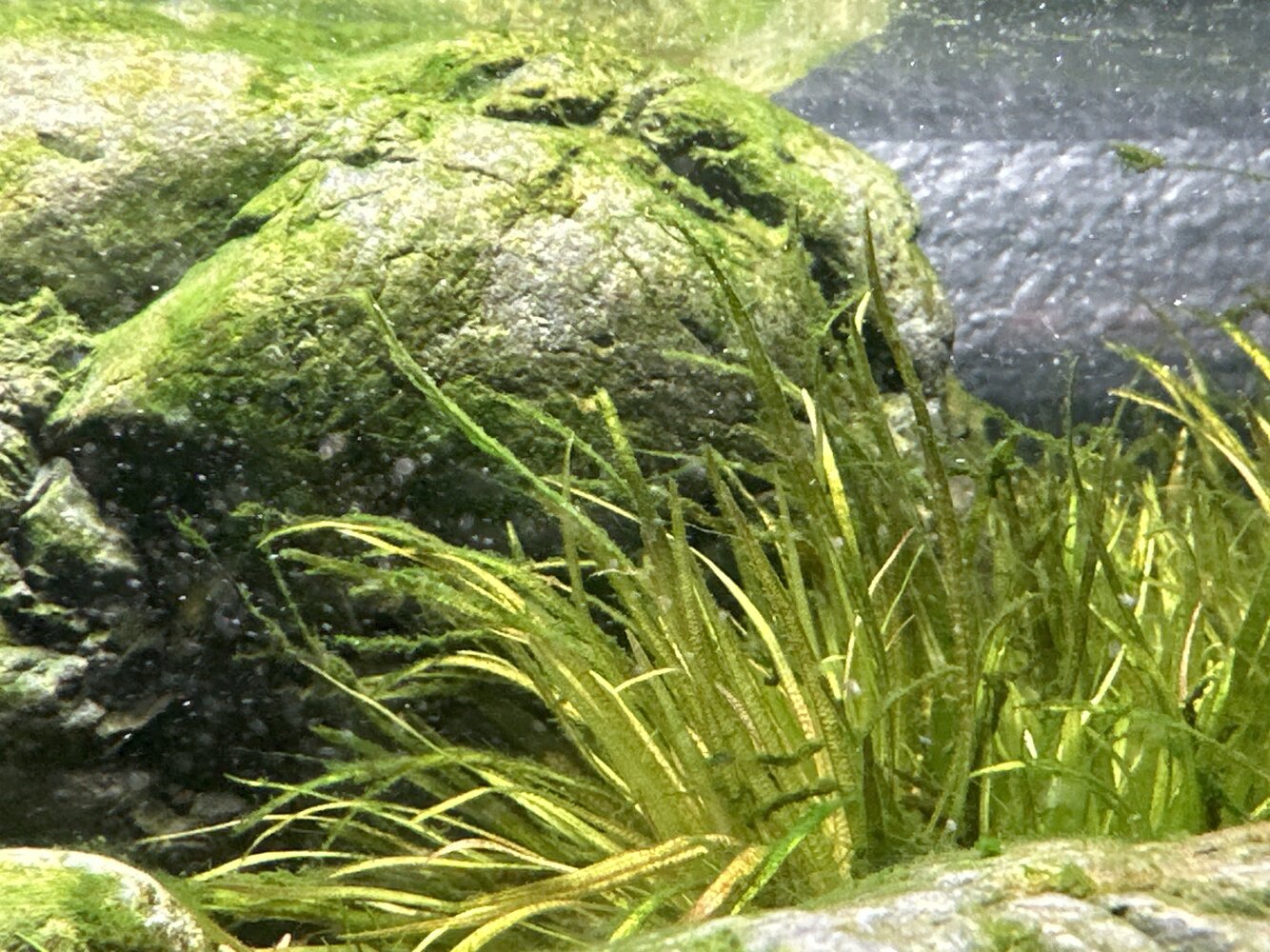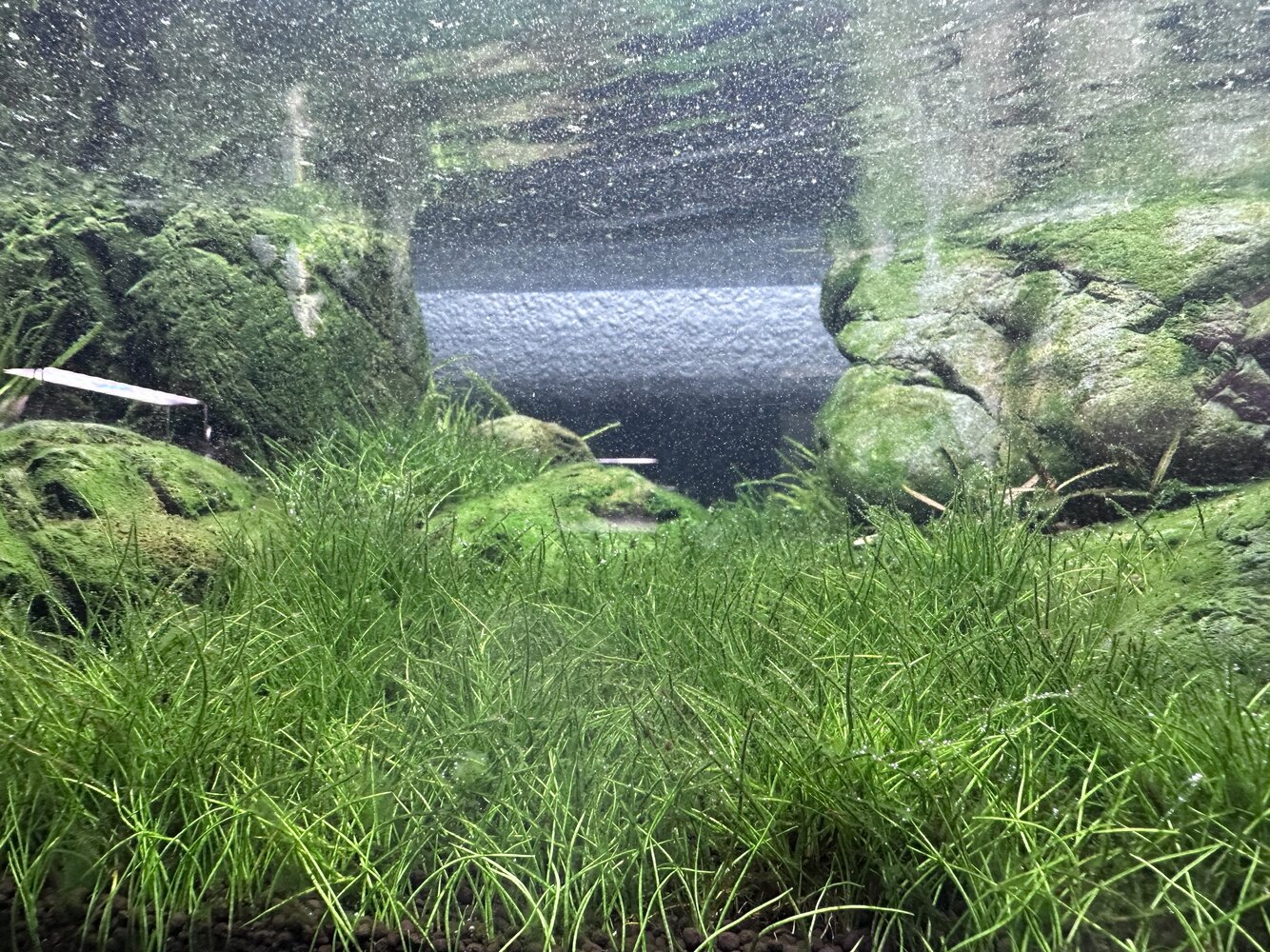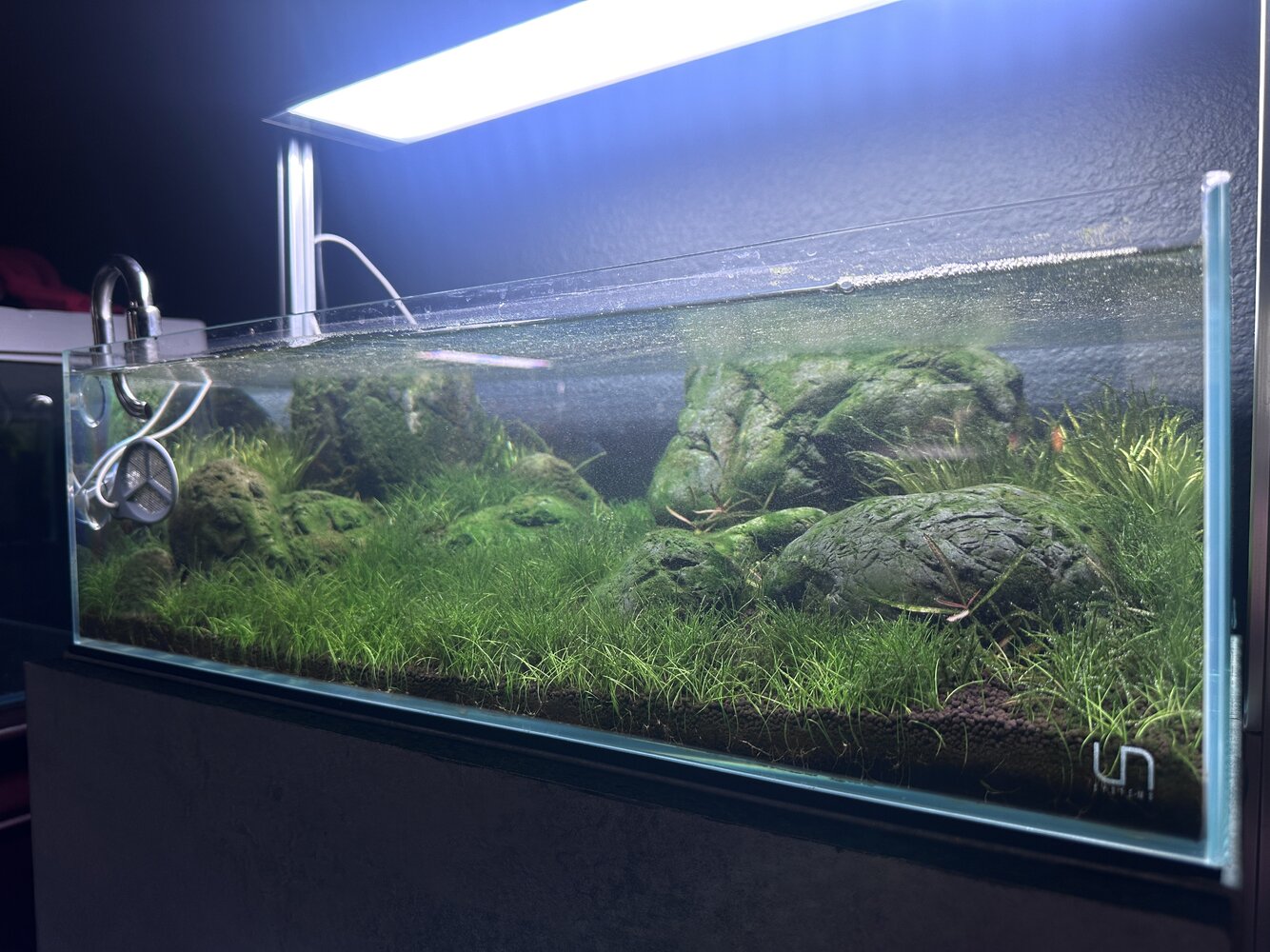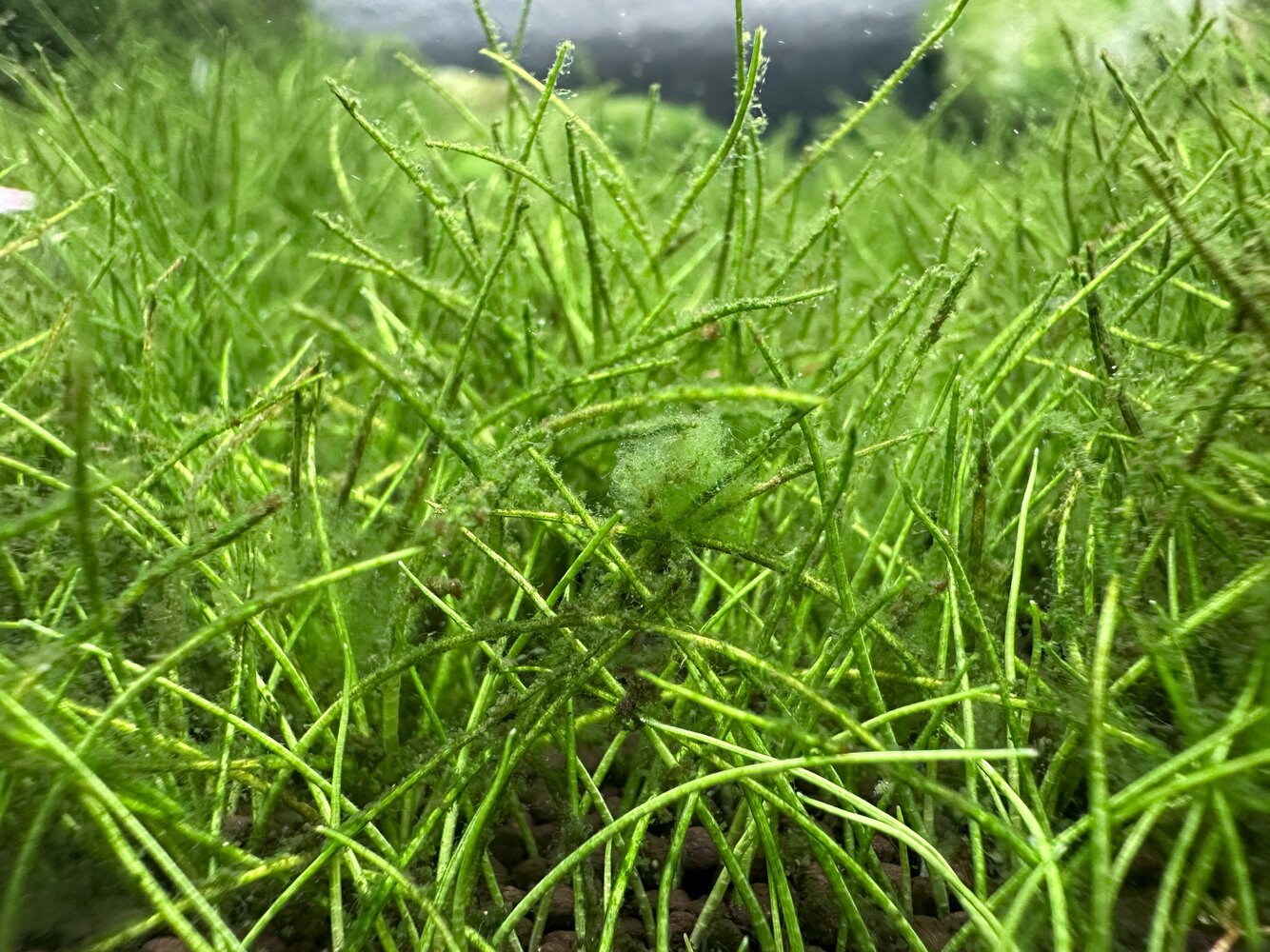Framed Nature
Member
Hello everyone!
I have a 60CM shallow tank Iwagumi that has been struggling with algae issues for quite some time (almost two months). Some unfortunate circumstances led to me having to do a 4 day blackout which successfully killed a majority of the algae. However, after 3 days, it is beginning to return.
Some key info:
This is a 20cm deep tank, with my light hanging 17cm above for a total of approximately 30-37cm from light to carpet plants. With the Chihiros app, I am running full 100% intensity.
Would you all recommend either raising the light or dropping the intensity? If neither, maybe some areas to look at to identify the root causes?
Cheers!
I have a 60CM shallow tank Iwagumi that has been struggling with algae issues for quite some time (almost two months). Some unfortunate circumstances led to me having to do a 4 day blackout which successfully killed a majority of the algae. However, after 3 days, it is beginning to return.
Some key info:
- RO water exclusively
- No Ammonia present
- Amano Shrimps present
- Plants are looking spectacular
- 1-2 times a week 50% water change
- EI dosing with APT e
- Filter is clean as well as equipment
- CO2 stabilized
This is a 20cm deep tank, with my light hanging 17cm above for a total of approximately 30-37cm from light to carpet plants. With the Chihiros app, I am running full 100% intensity.
Would you all recommend either raising the light or dropping the intensity? If neither, maybe some areas to look at to identify the root causes?
Cheers!






